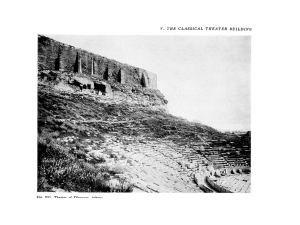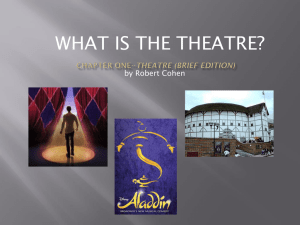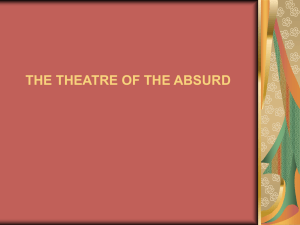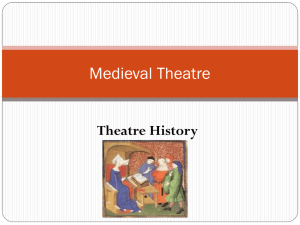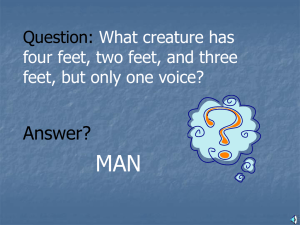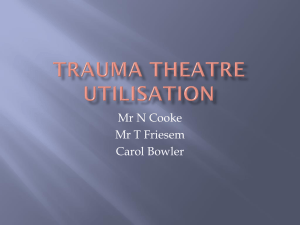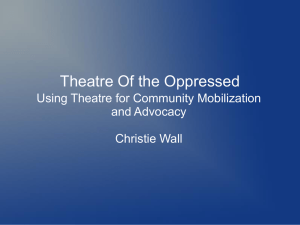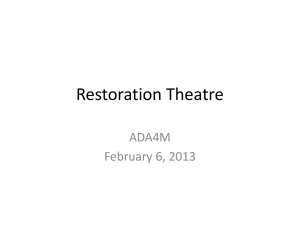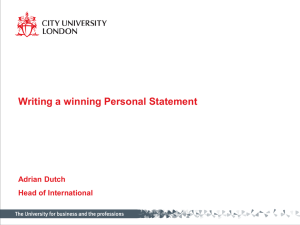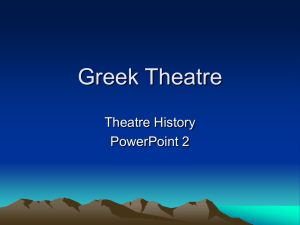19th Century American Theatre
advertisement
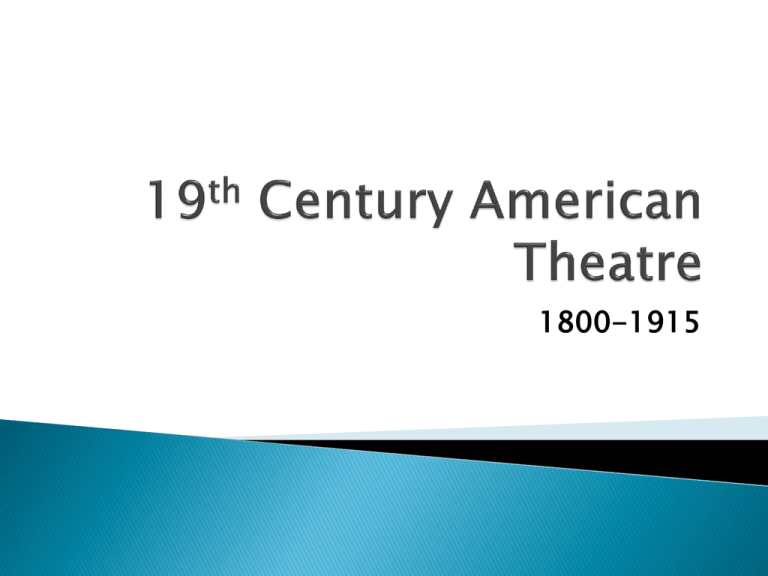
1800-1915 American theatre - starting to develop its own flavor - up to this time borrowed from English theatre - early drama sparse - the church controlled events - theatre was viewed as sinful the Puritans forbid theatre and prize fighting First theatre: Virginia- College of William and Mary 1702- first play 1716- first playhouse (theatre) 1778-The Continental Congress denounced theatre during the Revolutionary War- they considered it to “divert minds from the defense of their country.” 1787- THE CONTRAST-a comedy about American problems - enjoyed by George Washington; he enjoyed theatre Tyler Royall uses the form to satirize Americans who follow British fashions and indulge in 'British vices'. The Contrast marks the first play written by an American citizen that was professionally produced. American theatre flourishes Showboats traveled the Mississippi Playhouses were built in major cities Style of these theatres: - smaller theatres - narrow apron - box sets - incandescent lighting - Powerful managers - actors well trained - the “age of the actor” had arrived - repertory theatre emerged (railroads helped this) road companies grew - the long running Broadway Show began- New York became the center of theatre - theatre in America becomes big business Edwin Booth considered America’s greatest actor excellent as Hamlet Richard Mansfield American actor best known for his performances in Shakespeare plays, Gilbert and Sullivan operas and for his portrayal of the dual title roles in Strange Case of Dr. Jekyll and Mr. Hyde. Maude Adams an American stage actress, who achieved her greatest success as Peter Pan. Adams' personality appealed to a large audience and helped her become the most successful and highest-paid performer of her day, with a yearly income of more than one million dollars during her peak. She was often referred to simply as "Maudie" by her fans. The Barrymores The Barrymores had early intentions to break away from the family theatrical tradition. But acting was their final choice thanks to family, natural ability, talent and good looks. The Barrymores were stage idols. Mrs. John Drew Barrymore Maurice John Ethel Lionel MINSTREL SHOW- black face; African-American songs and jokes, very popular VAUDEVILLE- extremely popular; variety show- trained animals, singers, acrobats, jugglers, dancers, comedians, animal actsfinally died out with the advent of radio, movies, and tv. MELODRAMA- sentimental; audiences wept at the plight of poverty-stricken heroines in the clutches of evil villains MUSICALS-a form of theatre combining music, songs, spoken dialogue and dance. The emotional content of the piece – humor, pathos, love, anger – as well as the story itself, is communicated through the words, music, movement and technical aspects of the entertainment as an integrated whole. The Black Crook is considered to be the first piece of musical theatre that conforms to the modern notion of a "book musical". The book is by Charles M. Barras (1826-1873), American playwright An evil, wealthy Count Wolfenstein seeks to marry the lovely village girl, Amina. With the help of Amina's scheming foster mother Barbara, the Count arranges for Amina's fiancé, Rodolphe, an impoverished artist, to fall into the hands of Hertzog, an ancient, crook-backed master of black magic. Hertzog has made a pact with the Devil (Zamiel, "The Arch Fiend"): he can live forever if he provides Zamiel with a fresh soul every New Year's Eve. As Rodolphe is led to this horrible fate, he escapes, discovers a buried treasure, and saves a dove. The dove magically turns out to be Stalacta, Fairy Queen of the Golden Realm, who is pretending to be a bird. The grateful Queen rescues Rudolph by bringing him to fairyland and then reuniting him with his beloved Amina. The Count is defeated, demons drag the evil Hertzog into hell, and Rodolphe and Amina live happily ever after. Note: The musical was 5 ½ hours long Theatre in the 20-21st Centuries

